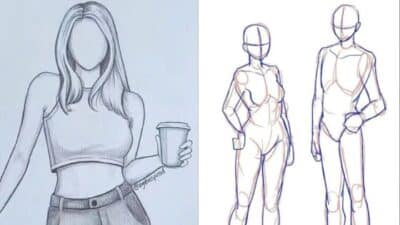

What makes a female character design memorable and real? It often comes down to careful design choices that go beyond looks. Creating female characters means thinking about their personality, background, and how they fit in their world, not just their physical appearance.
Effective female character design captures expression, style, and story all at once. Every detail, from the eyes to the clothing, helps show who the character is and what she represents. Balancing style with purpose can engage the audience and bring depth to a character.
Designers must also consider the genre and setting, as these elements shape how a character looks and acts. A character’s design should feel natural and connected to the story, making her more believable and interesting.
Key Takeways
- Character design blends personality and visual traits.
- Details like eyes and clothing reveal character depth.
- Design fits to the story’s style and setting.
Principles of Female Character Design

Good female character design combines clear visual elements, unique features, and believable poses. Designers must focus on how the character looks and moves while also making her easy to recognize and feel real. Key factors include the shape, posture, and balance between distinct traits and relatability.
Fundamental Elements of Character Design

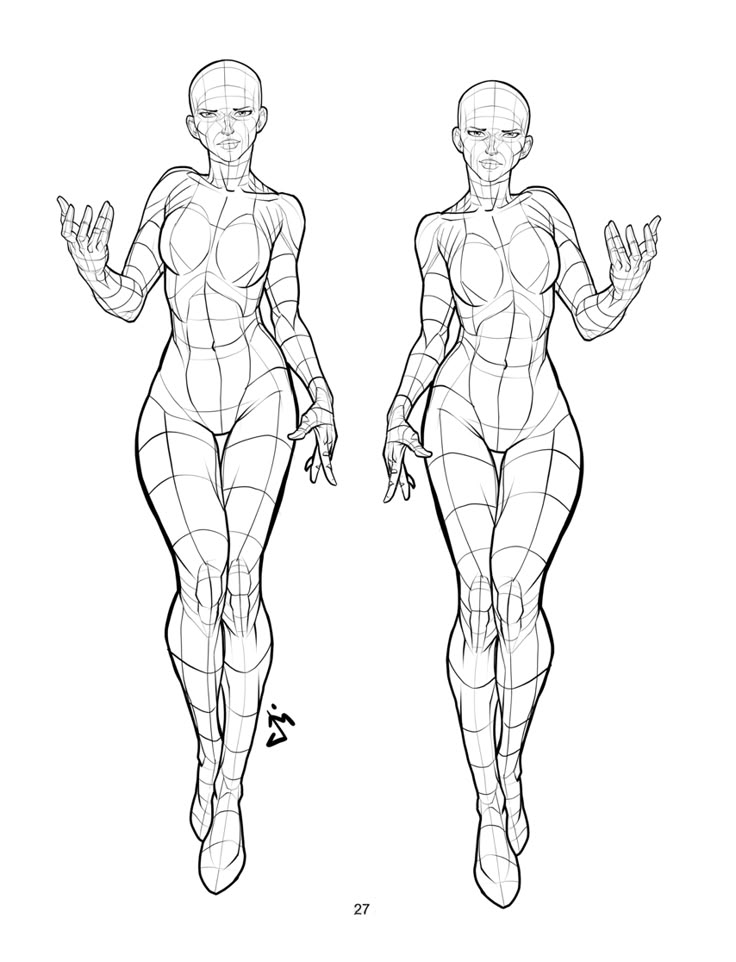
The first step in designing a female character is defining her traits. This includes her face shape, hairstyle, clothing, and color palette. These elements create her identity and help tell her story without words.
Personality also plays a role. A confident character may have sharp, bold features, while a shy one might have softer shapes. Designers use shapes like circles, squares, and triangles to suggest different moods.
Character details matter too. Small touches like scars, jewelry, or glasses give depth. These details should match her story and personality to make her believable.
Silhouette and Posture
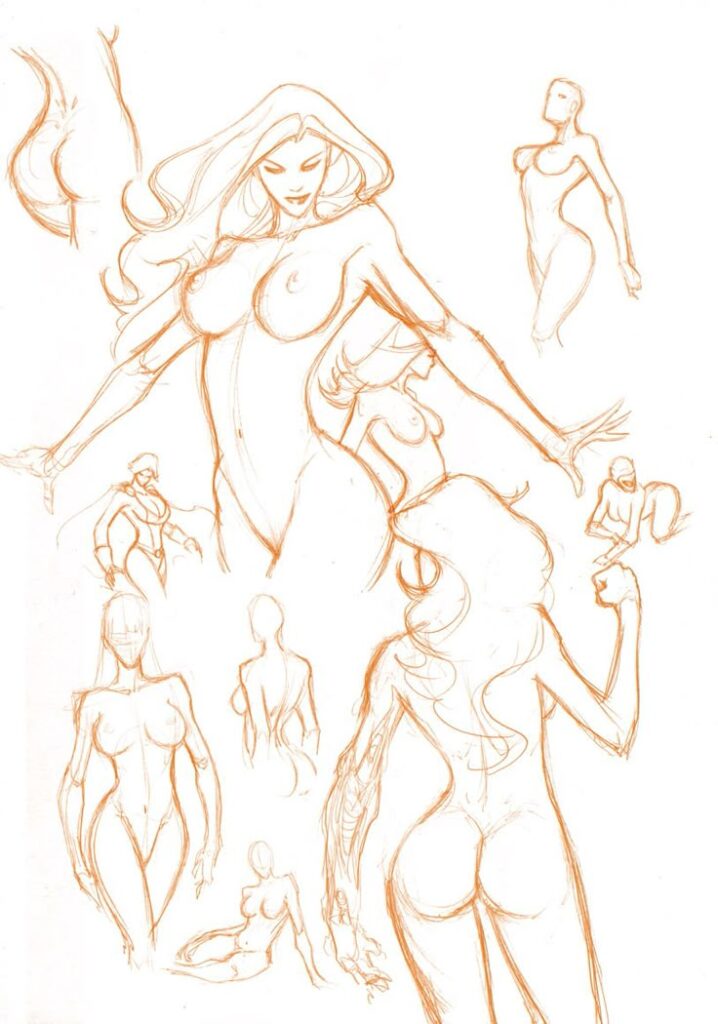
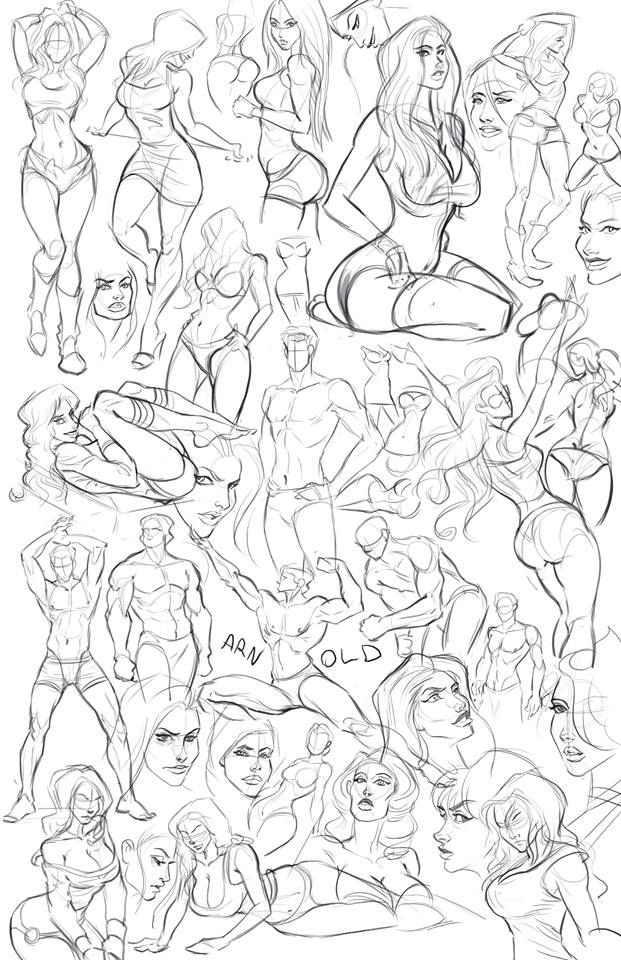
A strong silhouette makes a female character easy to recognize, even from a distance. Clear, simple shapes help the character stand out and avoid confusion with others.
Posture shows emotion and attitude. A character with straight shoulders and a raised chin may seem proud or brave. Slouched posture might indicate sadness or uncertainty.
Combining silhouette and posture creates a clear visual story. It helps viewers understand the character’s mood and role before she speaks or acts.
Balancing Uniqueness and Relatability
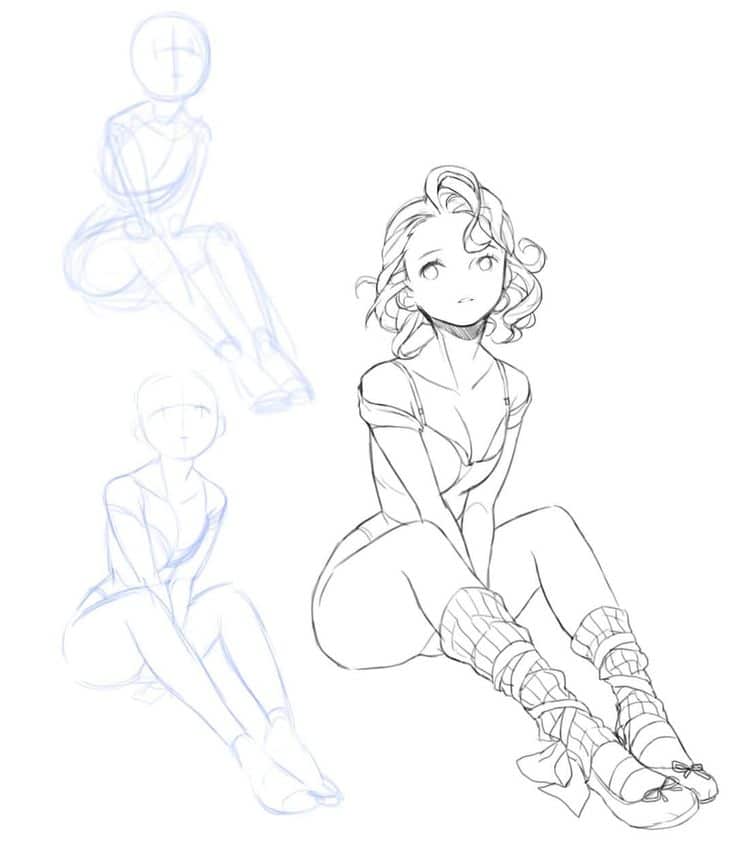
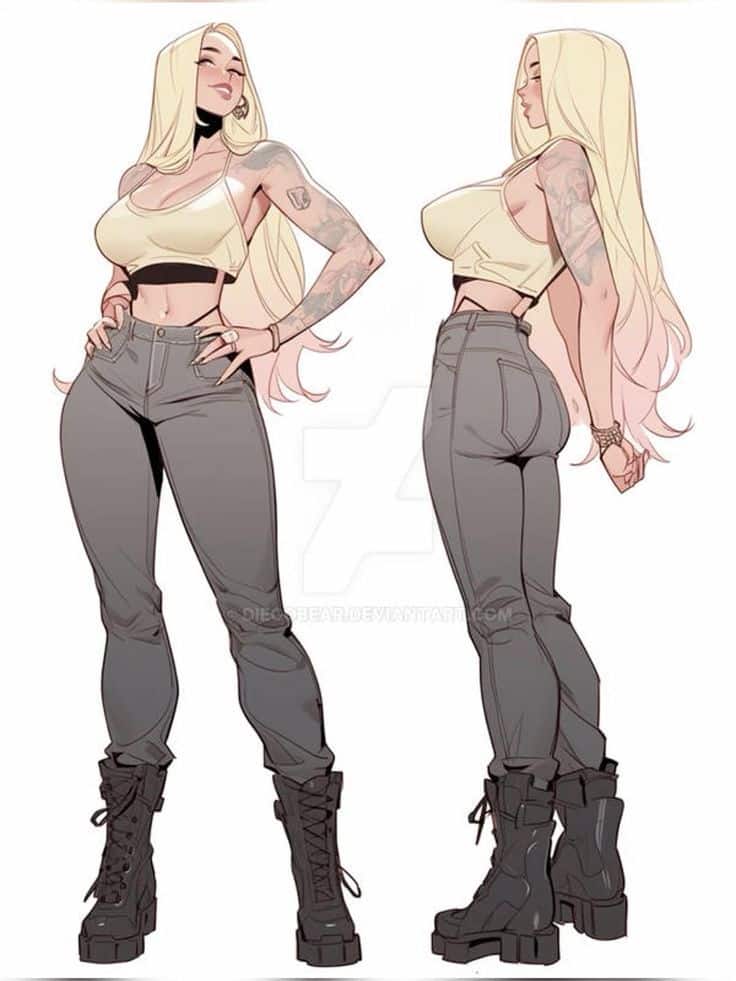
A good female character feels fresh yet familiar. Unique traits help her stand out but must still connect with the audience’s experiences or feelings.
To balance this, designers use relatable body language and expressions. This makes the character’s emotions clear and real.
At the same time, certain design choices—like unusual hair color or fashion—can make her memorable. The mix of new and known keeps the character interesting without losing viewer trust.
Conceptualizing Female Characters

Creating a female character starts with understanding who she is and what drives her. This clarity shapes her appearance, actions, and role in the story. Thoughtful design builds characters that feel real and fit well within their settings, whether in comics, animation, or cartoons.
Defining Character Background and Motivation
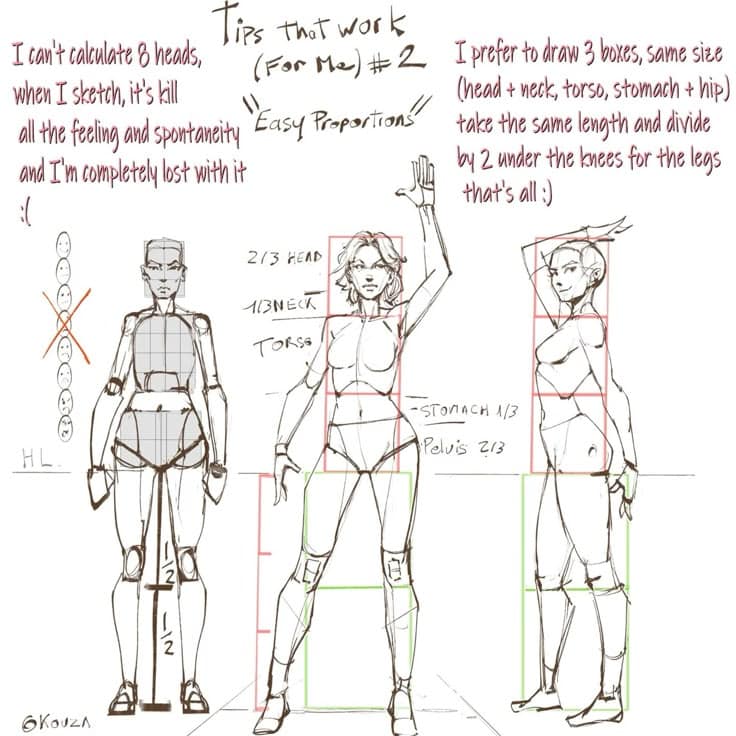
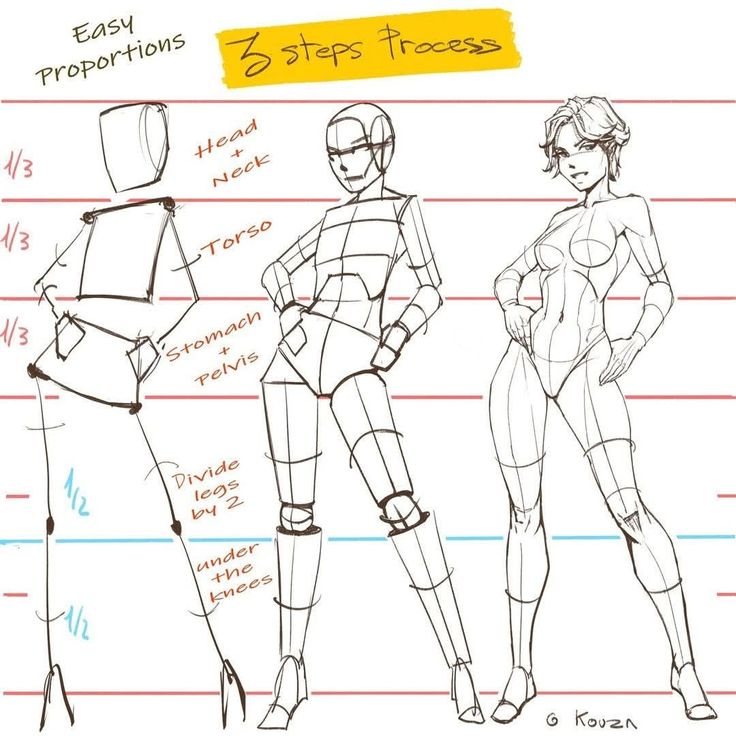
A character’s background includes her history, environment, and experiences that shape who she becomes. These details explain why she acts a certain way and what she aims to achieve. For example, a character raised in a strict household might value rules and discipline.
Motivation drives a character’s choices and goals. Clear reasons behind her actions make her believable. She might fight for justice, seek freedom, or prove her worth. Understanding motivation helps avoid stereotypes and gives depth to the story.
Use these questions to define background and motivation:
- Where did she grow up?
- What key events influenced her?
- What does she care about most?
- What challenges does she face?
Character Sketch and Development


A character sketch visually captures her traits and personality through drawings or descriptions. It guides how she looks, moves, and expresses emotions. Even cartoon characters benefit from clear sketches that show her style and uniqueness without relying on clichés.
Development is the process of refining the character’s traits over time. As the story progresses, she should grow, face conflicts, and change realistically. Strong female characters avoid being one-dimensional by displaying both strengths and flaws.
Key points for character sketch and development:
- Focus on distinct physical features and body language.
- Show personality through posture, clothing, and facial expressions.
- Plan changes in attitude or skills throughout the story.
- Keep the design consistent but open to evolution.
Visual Elements in Female Character Design

Female characters often show their personality and role through visual choices. Designers use shape, color, and details to create clear impressions. These design parts work together to form a believable and relatable image.
Clothes and Fashion
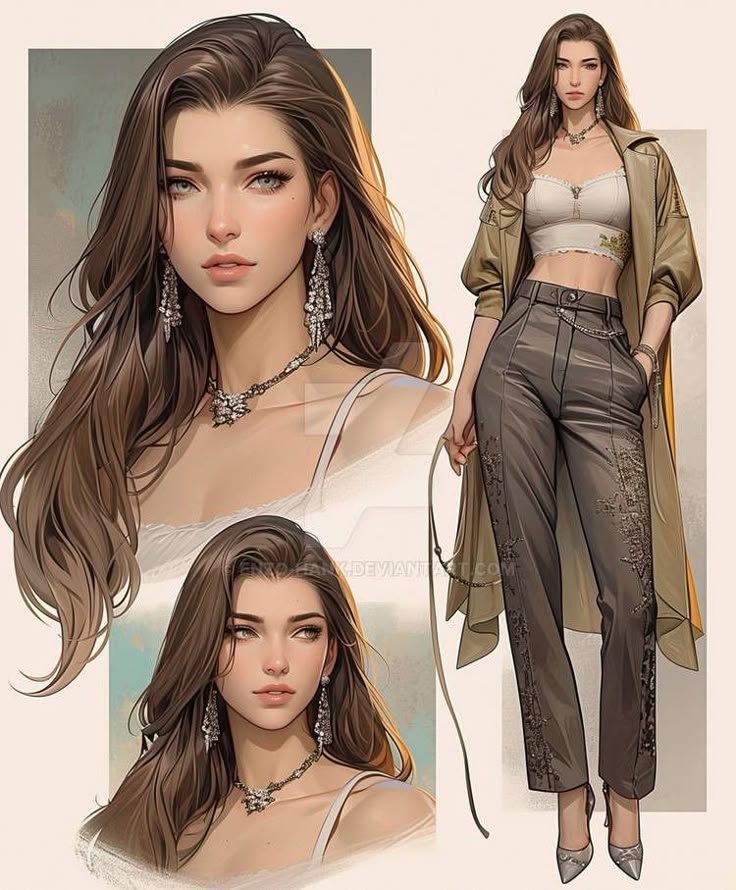
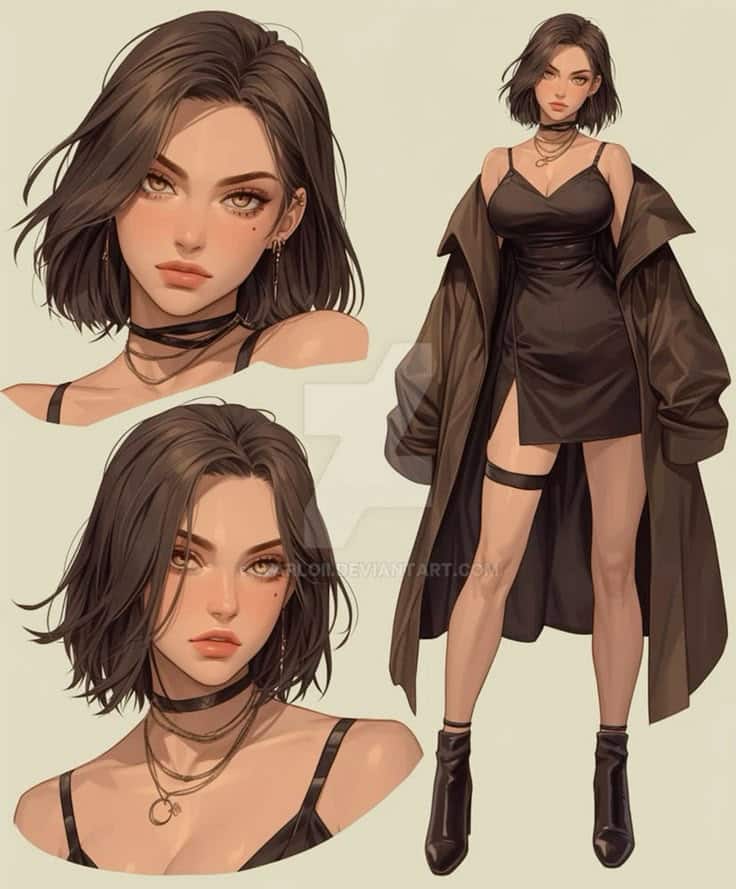
Clothes define a female character’s style and identity. Soft, flowing fabrics suggest femininity, while fitted shapes highlight curves. Designers often use curved lines to emphasize a smooth silhouette.
Color plays a key role. Light or pastel colors can suggest innocence or softness, while bold colors might show strength or confidence. Patterns and textures also give clues about the character’s environment and personality.
Weight in clothing matters too. Looser clothes can give a relaxed or modest look. Tight or layered outfits can focus attention on body shape. The style chosen should fit the story and setting.
Accessories, Shoes, and Sunglasses
Accessories tell stories about a character. Jewelry like necklaces or earrings often add a touch of elegance or personal style. Watches and bracelets suggest practicality or fashion sense.
Shoes can show activity level or personality. High heels suggest glamor or formality. Sneakers or boots hint at readiness or toughness. Footwear should fit both character and story demands.
Sunglasses add attitude or mystery. They also give a cool or stylish vibe. Including small details like scars on exposed skin can add depth and history to the character.
Hairstyle and Physical Features
Hairstyles shape first impressions. Long, flowing hair is often seen as feminine, while short styles may show independence or strength. Hair color also signals personality: bright colors can be playful, while natural shades feel relatable.
Physical features are important too. Smooth, rounded lines often suggest softness, while sharper angles can give a stronger look. Scars or marks add uniqueness and realness.
Weight and body shape affect design. Curvy figures emphasize traditional feminine traits, but diverse body types reflect realism. The balance of these features builds a fuller character image.
Incorporating Genre and Style

Female character design changes based on the genre and style of the work. Factors like culture, visual style, and story themes shape how a character looks and acts. Designers use different approaches to fit specific settings like anime, cartoons, or fantasy worlds with magic and technology.
Anime and Manga Influences
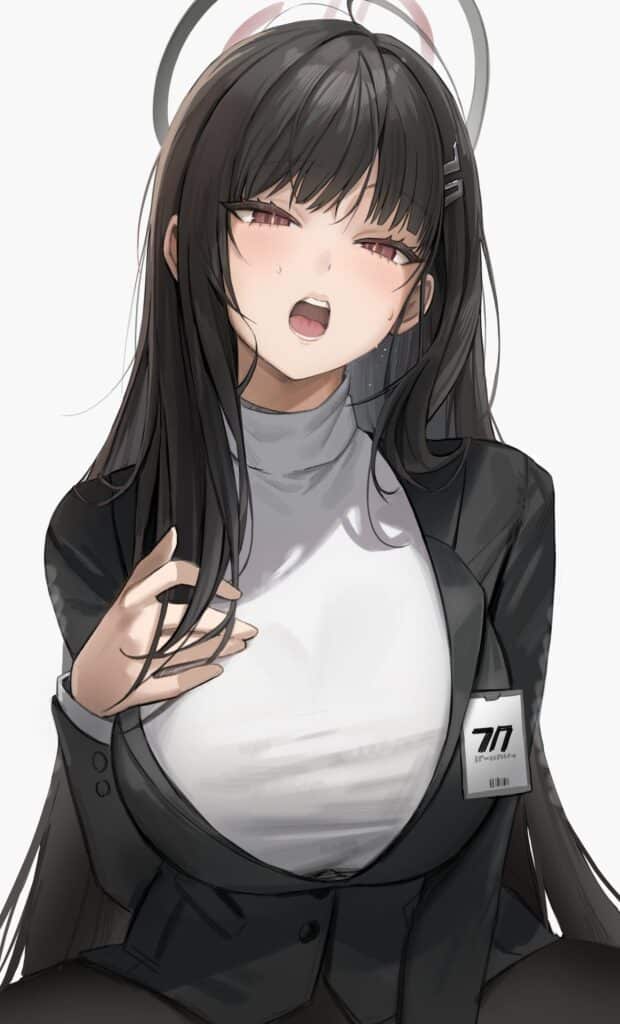

Anime and manga often focus on big eyes, fine details, and expressive faces. These features help show emotions clearly. Characters usually have colorful hair and unique outfits that match their personalities.
Designs in Japan often blend realism with stylized looks. Proportions can vary from very realistic to exaggerated for dramatic effect. Designers pay close attention to personality traits in the visual style, making characters distinct.
Costumes often reflect the story’s mood, from school uniforms to fantasy armor. Accessories like ribbons or weapons add more depth. This style gives freedom to explore both subtle and bold designs depending on the story tone.
Cartoon Character Design
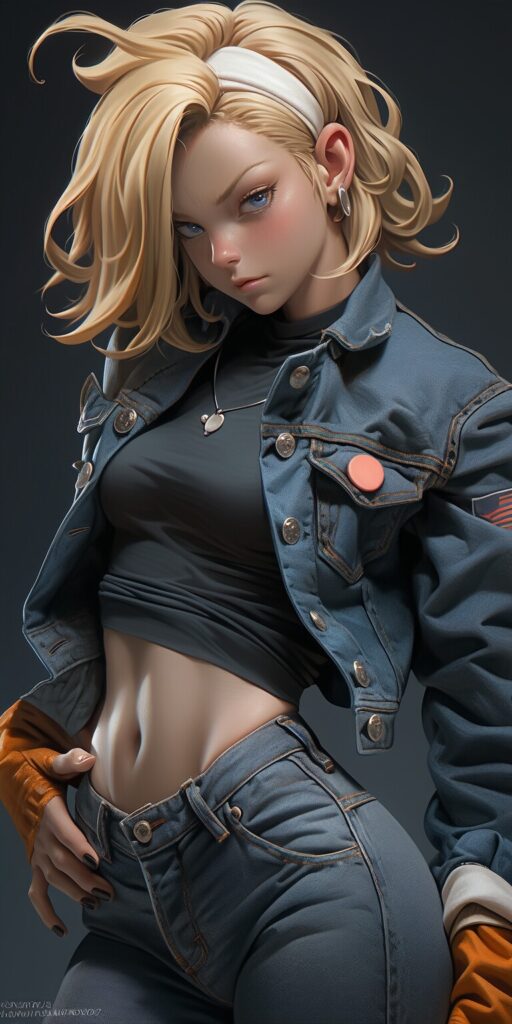
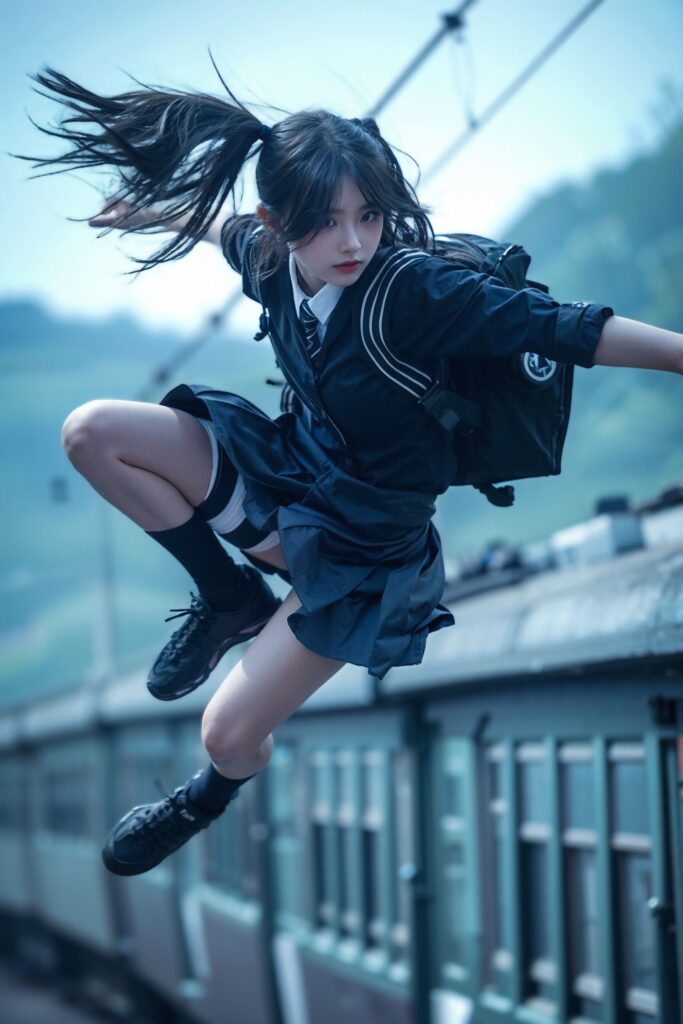
Cartoon designs use simpler shapes and bright colors. Characters often have exaggerated features such as big heads or eyes. This makes them easy to recognize and remember.
Expression plays a large role. Faces are often very flexible to show clear emotions fast. Costumes tend to be basic but include key details to tell the viewer who the character is quickly.
Designers focus on clarity and ease of animation. Movement and poses are important to capture personality without too much detail. This style fits well for light stories or comedy, but can work in serious tales when adjusted.
Fantasy, Magic, and Technology
Characters in fantasy settings often wear armor, robes, or mystical accessories. These show their role, like a warrior or mage. Magic elements might include glowing symbols or unusual colors in their design.
Technology-based characters use futuristic gear, gadgets, or cybernetic parts. Designs focus on a mix of function and style. This creates a believable world where advanced tools shape the character’s look.
Combining magic and technology can highlight contrasts or blend styles. Designers use glowing effects, circuits, or runes to show power sources. These visual cues help the audience understand the character’s abilities and background.
World-Building and Backgrounds

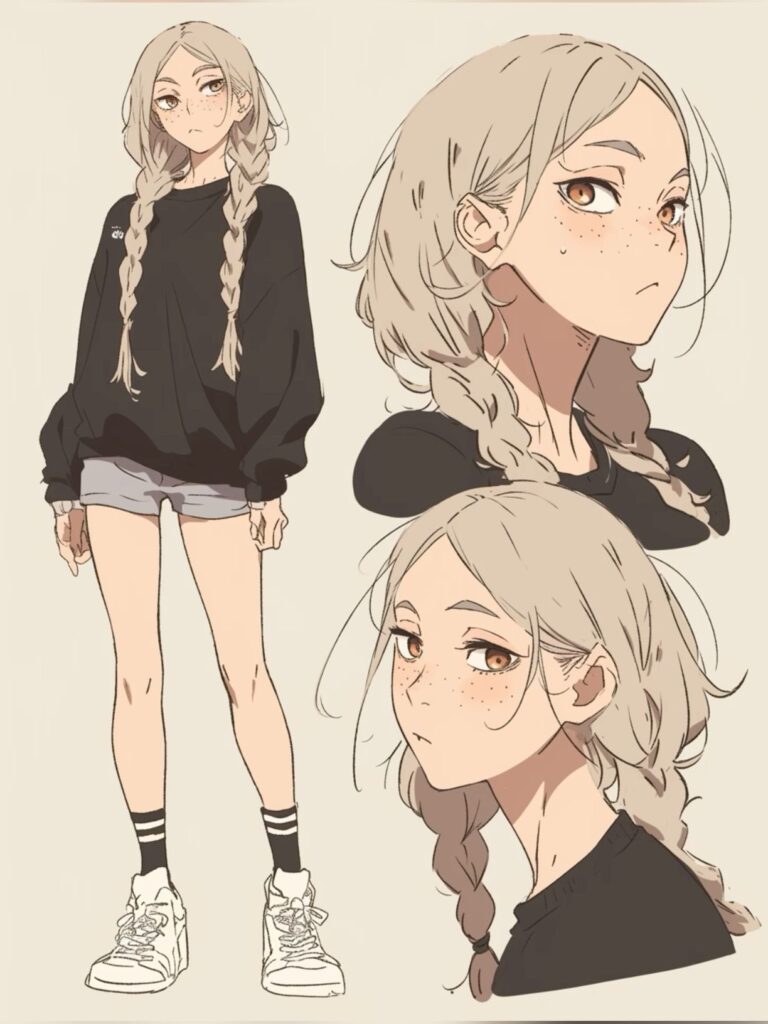
A character’s environment shapes who they are and how they act. Backgrounds show their history, culture, and the world they live in. This section explains how to fit characters into their settings, and how backgrounds add meaning to their story without using lots of words.
Integrating Character with Environment
Characters should feel like part of their world, not just placed there. This means their clothing, tools, and behavior reflect the environment around them. For example, a female character in a cold, rough place like Skyrim might wear heavy fur and carry weapons fit for harsh conditions.
Her skills and goals should connect to the local culture. If she comes from a village that values hunting, she may know survival skills and tracking.
Use details like scars, dirt, or worn clothes to show her life in that setting. These small touches make the character believable and help the reader understand her background without explanation.
Using Backgrounds for Storytelling

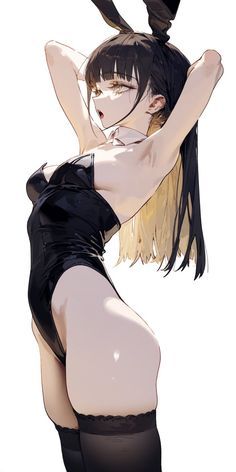
Backgrounds serve as a silent narrative. They can reveal past events or hint at future challenges. A broken sword on the wall or cold, empty streets create mood and help tell the character’s story.
They can show themes too, like struggle or hope. For example, a ruined castle behind the character suggests loss or a fight for power.
The background should support the character’s emotions and goals. It adds depth by showing what the character faces daily and what shaped her life.
Using backgrounds well means choosing details that fit the character’s world clearly and support the story’s main points.
- 6.2Kshares
- Facebook0
- Pinterest6.2K
- Twitter0

